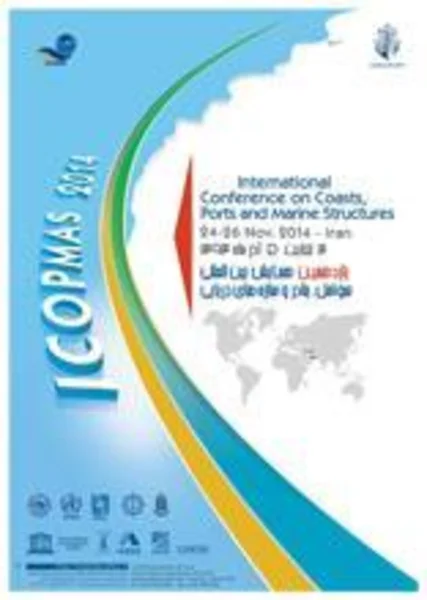-
oil spill clean up & survey and monitoring of beaches
جزئیات بیشتر مقاله- تاریخ ارائه: 1387/01/01
- تاریخ انتشار در تی پی بین: 1387/01/01
- تعداد بازدید: 756
- تعداد پرسش و پاسخ ها: 0
- شماره تماس دبیرخانه رویداد: -
oil spilled on water is seldom completely contained and recovered and some of it eventuall reaches the shoreline the fate and behavior of oil on shorelines is influenced by many factors, some of which relate to the oil is deposited on the shoreline, such as weather and waves. these factors include the type and amount of oil, the degree of weathering of the oil, both before it reaches the shoreline and while on the shoreline, the temperature, the state of the tide when the oil washes on shore, the type of beach substrate, i.e., it's material composition, the type and sensitivity of biota on the beach, and the steepness of the shore, the extent that an oil penetrates and spreads, its adhesiveness, and how much the oil mixes with the type of material on the shoreline and all important factors in terms of clean up.there are many types of shorelines, all of which are classified in terms of sensitivity of oil spills and ease of clean up. the types discussed here one: bedrocks, man-made solid structures, boulder beaches, pebble- cobble, mixed sandgravel beaches, sand beaches, sand tidal flats, mud tidal flats, marshes, peat and low-lying tundra,and mangrove .the primary objective of clean up operation is to minimize the effects of the stranded oil and accelerate the natural recovery of affected areas.obviously, a clean up technique should be safe and effective and not be so intusive as to cause more damage than the oil itself (fingas,2000)
حوزه های تحت پوشش رویداد
مقالات جدیدترین رویدادها
-
استفاده از تحلیل اهمیت-عملکرد در ارائه الگوی مدیریت خلاقیت سازمانی و ارائه راهکار جهت بهبود
-
بررسی تاثیر ارزش وجوه نقد مازاد بر ساختار سرمایه شرکت های پذیرفته شده در بورس اوراق بهادار تهران
-
بررسی تأثیر سطح افشای ریسک بر قرارداد بدهی شرکت های پذیرفته شده در بورس اوراق بهادار تهران
-
بررسی تأثیر رتبه بندی اعتباری مبتنی بر مدل امتیاز بازار نوظهور بر نقد شوندگی سهام با تأکید بر خصوصی سازی شرکت ها
-
تأثیر آمیخته بازاریابی پوشاک ایرانی بر تصویر ذهنی مشتری پوشاک ایرانی (هاکوپیان)
-
بایومس چوب به عنوان منبعی تجدیدپذیر برای تولید اتانول و سایر سوخت های زیستی
-
بررسی پتروگرافی و ژئوشیمی سنگهای آلکالن پتاسیک نیمه جنوبی جزیره اسلامی
-
کاربرد شبکه عصبی مصنوعی در تخمین خواص پتروفیزیکی یکی از مخازن هیدروکربوری جنوب ایران
-
نقص توسعه پایدار در مدیریت صحیح گردشگری دینی در جامعه ایران
-
تأثیر معدنکاری معدن زغال سنگ پروده طبس بر آلودگی منابع آبی منطقه با نگرشی بر ژئوشیمیایی لایه های زغال
مقالات جدیدترین ژورنال ها
-
مدیریت و بررسی افسردگی دانش آموزان دختر مقطع متوسطه دوم در دروان کرونا در شهرستان دزفول
-
مدیریت و بررسی خرد سیاسی در اندیشه ی فردوسی در ادب ایران
-
واکاوی و مدیریت توصیفی قلمدان(جاکلیدی)ضریح در موزه آستان قدس رضوی
-
بررسی تاثیر خلاقیت، دانش و انگیزه کارکنان بر پیشنهادات نوآورانه کارکنان ( مورد مطالعه: هتل های 3 و 4 ستاره استان کرمان)
-
بررسی تاثیر کیفیت سیستم های اطلاعاتی بر تصمیم گیری موفق در شرکتهای تولیدی استان اصفهان (مورد مطالعه: مدیران شرکتهای تولیدی استان اصفهان)
-
ارزیابی تأثیر استراتژی های منابع انسانی در ایجاد و توسعه مدیریت منابع انسانی سبز
-
خوانشی تطبیقی از معماری و هنر مجسمه سازی؛ مورد پژوهی: آثار سانتیاگو کالاتراوا، معمار پیکره ساز اسپانیایی
-
نقش استراتژی های سرمایه انسانی بر بهبود رضایت شغلی (مورد مطالعه: بانک ملت شعب تهران)
-
تعیین نقش شوخ طبعی و سازگاری اجتماعی در پیش بینی فرسودگی شغلی کارکنان دانشگاه پیام نور
-
evaluation of cable force changes effects on cable stayed bridge




سوال خود را در مورد این مقاله مطرح نمایید :